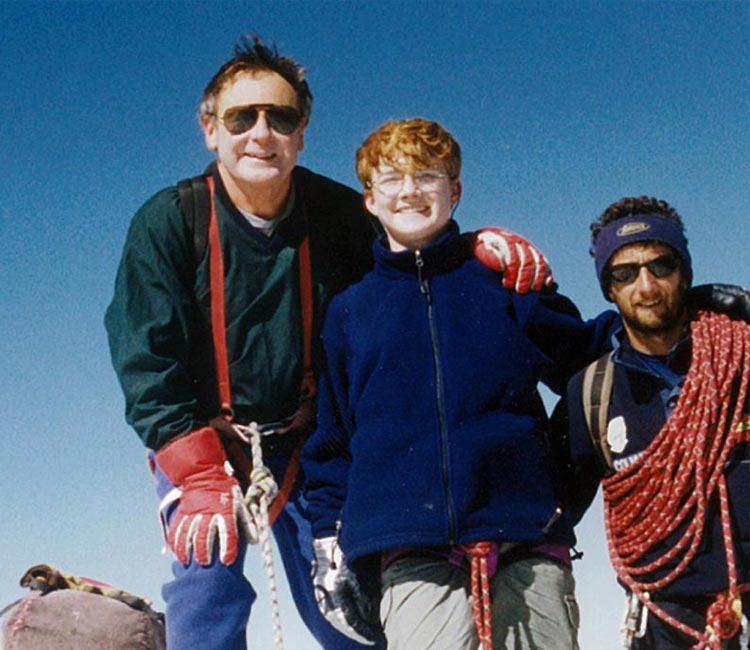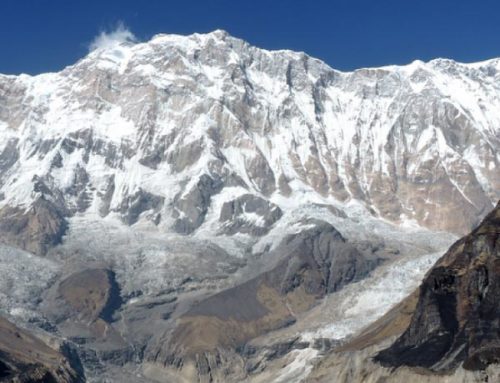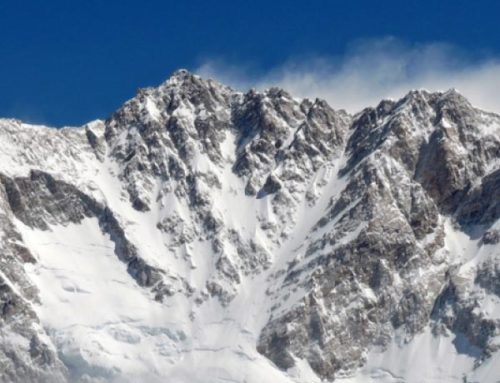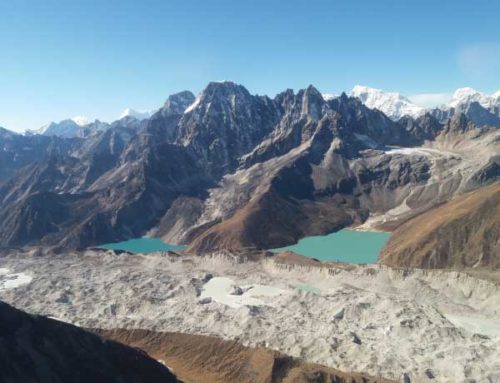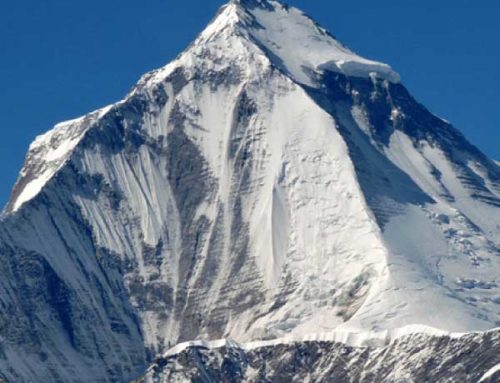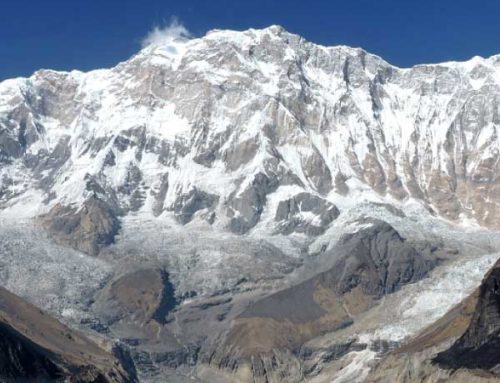What Life Is All About
Igrew up in a beige, prosaic suburb of Los Angeles named Glendale, California. I didn’t know much about the larger world until I read a book called “The Complete Book of Marvels” by Richard Halliburton. It was a rainy Saturday afternoon in March of 1958.
I was 14 years old. Halliburton had been a famous adventurer in the 1920s and 30s, and as I paged through the twenty year-old book full of Halliburton’s exploits and pictures of dozens of the world’s most extraordinary places, I was transfixed. The world, it dawned on me, was a vast place of endless wonders, containing infinite possibilities for exploration and adventure.
What mesmerized me in particular was Halliburton’s account of his climbing the Matterhorn. I stared at his picture of the Matterhorn, entitled “The Tiger of the Alps,” for the longest time. Then I got up, went to my father, showed him the picture, and announced out of the blue, “Dad, I want to climb that mountain.”
Most parents would have laughed at the absurdity of a young teen-ager with no mountaineering experience beyond Boy Scout hikes saying he wants to climb the most famous mountain in the world. But not my Dad.
He saw something had touched me. So instead, he said, “There’s a fellow at KTTV (the television station where my father worked ) from Switzerland, Hannes Schmidt. Let’s talk with him.” As luck would have it, Hannes had a close friend who was a bergführer or mountain guide in Zermatt at the base of the Matterhorn. This was Alfons Franzen, who wrote back that no one had climbed the Matterhorn so young, so all he could do was guide me up as far as he thought it safe, then we must turn back.
On that slender hope, Dad got KTTV to front the cost, and on September 15, 1958, Alfons and I set off in the pre-dawn darkness from the Hornli Hut, 4,000 feet below the summit of the Matterhorn. All I did was watch Alfons’ feet and the rocks he put them on, hour after hour, higher and higher. Hoping against hope that somehow I might make it, my father got a glacial rescue pilot to fly him in a tiny single-engine plane around the summit in the late morning on the chance I might be there.
I was. Standing on the thin 14,560 ft. summit of the Matterhorn tightly roped to Alfons, tears streaming down my face, I waved to my father in the little plane circling around us.
It was a moment that set me upon my life’s direction. People collect things. They collect stamps, or coins, or porcelain. At 14, I decided what I wanted was to collect extraordinary experiences. You could lose your stamps or coins, but you can never lose what you have done with your life. A collection of unbelievably memorable adventures can never be taken away.
[Read the full story of Jack’s iconic ascent as the youngest person in history to summit the Matterhorn]
So I set off alone, to swim the Hellespont like Leander in Greek mythology, get adopted into a tribe of Amazon headhunters, and hunt a man-eating tiger in South Vietnam while still in high school. My intellectual adventures began when I read Ayn Rand, Ludwig von Mises, and Aristotle, inspiring me to get a Ph.D. in Philosophy (so I guess I’m what you get when you cross Ayn Rand with Richard Halliburton!).
I explored Africa, the Gobi, Mongolia, Central Asia, Tibet, the Himalayas, the Andes, Borneo, and the South Pacific, discovered lost tribes in New Guinea and the Kalahari, took elephants over the Alps in Hannibal’s footsteps, skydived onto the North Pole, roused anti-Marxist guerrillas from Angola to Afghanistan and helped get rid of the Soviet Union.
Yet so powerful was that moment on the Matterhorn with my father that we recalled it together just before he died. He could not open his eyes or speak. But I knew he could hear and understand me because he could respond with his hand. His grasp was firm and strong to the end. We relived that supreme instant of me on the summit and him circling above one last time, and then he was gone.
Fourteen years ago, I became a father myself, blessed with my son, Brandon. When he turned five, he told me he wanted to come with me on my next trip to Africa. So off we went. On our first day on safari in Kenya’s Masai Mara, we saw three lion kills yards away. In a Masai kraal (village), Brandon saw a baby born in a hut.
The next spring, Brandon, at age six, became the youngest person ever to go to the North Pole. At seven, I took him around the world through the soon-to-be-former Soviet Union, visiting democratic movements in Moscow, Minsk, and Kiev, helicoptering to remote villages in the Caucasus Mountains of Georgia, eating sashlik with Kazakhs in the Tien Shan Mountains in Central Asia, taking the Trans-Siberian Railroad across Siberia, and hiking and fishing in the Brooks Range of Alaska.
Brandon had his ninth birthday in Ladakh (Indian Tibet) in the Himalayas, his tenth getting his Black Belt in Tae Kwon Do, his eleventh scrambling up Ayers Rock in the Australian Outback, his thirteenth getting his PADI dive card and scuba-diving in the Cayman Islands (finally, I have my own dive buddy!).
Brandon is now fourteen. He began reminding me some time ago that it was at this age that I climbed the Matterhorn and might not it be his turn? What about our climbing the Matterhorn together, Dad? Brandon is a better athlete than I was at his age, stronger, and with a wisdom that far exceeds his years — so I knew he could do it. But I had to ask myself, forty years ago, I made it — did I have it in me to do it again, at 54?
Summiting the Matterhorn is a feat of incredible fitness and endurance, climbing hand over hand straight up for 4,000 feet and then straight back down, all in a matter of hours before the fickle weather changes its mind for the worst. I hadn’t climbed a big mountain in years, like Elbrus (18,500′) in the Caucasus with Frank Wells and Dick Bass in ’82, trekking around Everest in ’87, or 20,000′ Himalayan scrambles in Ladakh in ’93.
I told Brandon we would try. I reached Alfons in Zermatt, who was still guiding (although not up the big ones like the Matterhorn) at 74, and scheduled ten days of practice climbs in mid-July. I thought that would be sufficient to bring my aging muscles and lungs up to speed. After a technical climb up the Riffelhorn, Alfons pronounced my technique fine but he remained doubtful about my condition (I had been taking Brandon rock-climbing since he was seven, so he easily got Alfons’ assent).
After a crampon climb up the snow summit of the Breithorn (13,325′) proved exhausting for me, Alfons gave the thumbs down. “The boy might make it, Jack you cannot. The Matterhorn is an ultimate test of physical condition and you are not good enough. Stay at the bottom of the mountain and let Brandon try himself.” That was his verdict. I told him he was wrong. But in my heart I knew he was right.
To climb the Matterhorn, you must first go from Zermatt up to the Hornli Hut on the shoulder of the mountain at 10,500′. The day after the Breithorn, July 24, Brandon and I trudged up to Hornli. He had no problem. I was wiped out. My legs ached and I was exhausted. I told Brandon I was afraid that Alfons was right. He put his arms around me and said, “I know you can make it, Dad.” I told him I would try my best. I did not sleep well, and when the climbers’ call came to get up at 3:30 in the morning, I awoke sick with doubt and foreboding.
Brandon and I each had a bergführer, a young strong guide named Stefano for Brandon, and for me a veteran of decades of Alpine experience, Rony Inderbinen. We started off in the dark with headlamps. Hand over hand, up and up, legs heavy, always out of breath, never stopping, ever higher in the darkness. The sun rose, and turned the glaciers and ice-capped peaks of Monte Rosa, Castor and Pollux, and the Breithorn behind us a glowing pink. I barely had time to notice.
The sun hit the summit of the Matterhorn, and a curtain of gold began dropping down its vertical east face, unveiling the mountain before a cobalt sky. When we reached the halfway point, a tiny wooden shelter called Solvay, Rony assessed my situation and said, “Dr. Wheeler, as you may remember, above the Solvay it gets much harder. It is all vertical and we must use crampons over snow, ice, and rock. Even though technically you are a good climber, I think we should turn back and let your son climb on.” I begged him to let me continue.
Rony told Brandon and Stefano to go on. He turned to me and said, “We will try for a little longer, then, all right?” We continued up to the fixed ropes of the Shoulder, cramponed across the Schultes snow field, and finally got to the top of the fixed ropes of the Hang-Over (where four of the party of seven, led by Edward Whymper on the first ascent of the Matterhorn on July 14, 1865, fell to their deaths).
Brandon and Stefano were there. They had made it to the top and were on their way down. I disintegrated. “Why in God’s name am I climbing this blanking mountain if not to stand on top with my son?” I yelled in utter physical and mental anguish. Sure that I would not make it, Stefano had led Brandon to the summit, did not see Rony and me as we were too far below, and started the descent. Brandon was in tears on the summit, because, although he had made it himself, it was not with his Dad.
Before I could tell Rony that I was giving up 500 feet from the top, that my dream was lost and I could not continue, Brandon turned to Stefano, pointed upwards, and said, “We are going back to the top again.” The look in Brandon’s eyes told him he could not refuse.
Hand over hand, up over snow and rock, with legs that could barely move and lungs that could barely breathe, I gave the last 500 feet all that I had. When we reached the summit ridge it was as I remembered before: a knife blade in the sky, a football field two feet wide suspended high in space. Forty years later, on July 25, 1998, I was on the top of the Matterhorn once again, and this time with my fourteen year-old son. I embraced Brandon and wept.
It is not often that life gives us the privilege of such a moment. My life’s purpose has been seeking such moments, but they all seem now to pale before this one. To give my son such a moment is more deeply fulfilling than anything before. We human beings are not automatically provided with meaning and significance for our lives. We have to provide it ourselves, generate it for ourselves out of our individual character and soul.
This is what makes us different from other animals with whom we have emerged from evolutionary history. No lion, sitting underneath an acacia tree in the Serengeti, asks himself, “What does it mean to be a lion? What is the purpose of my existence?” A lion has no choice but to unself-consciously follow his genetic program. But human beings have to figure out how and why to survive, they have to choose a rationale that gives purpose and meaning for their lives. My choice has been to try and make my life, and now the life of my son, a thrilling adventure.
Yet not only for Brandon — for he has a little brother, Jackson, who just turned six. He is expecting me to take him, as I have promised, to Africa this December and the North Pole next spring. Some day, when Jackson becomes fourteen, he may pull on my sleeve and ask, “Dad, when do I get to climb the Matterhorn?” And when that day comes, off we will go — for that, to me, is what life is all about.
*Note: Originally published on July 31, 1998

